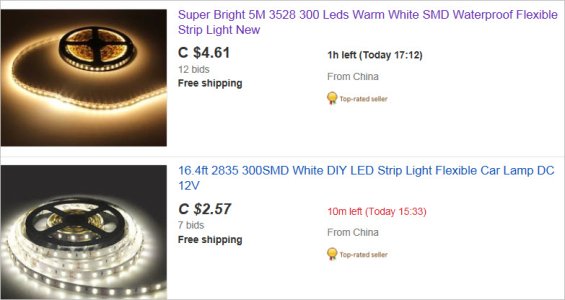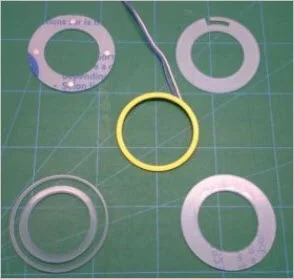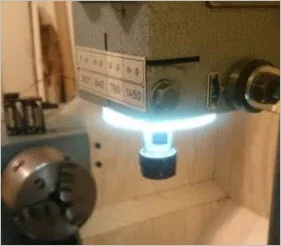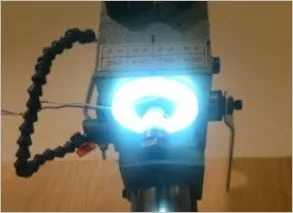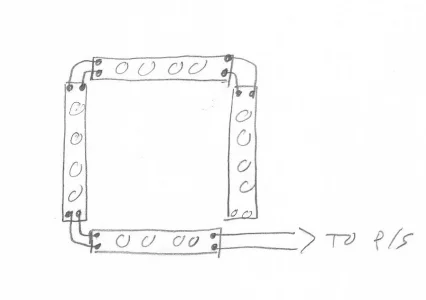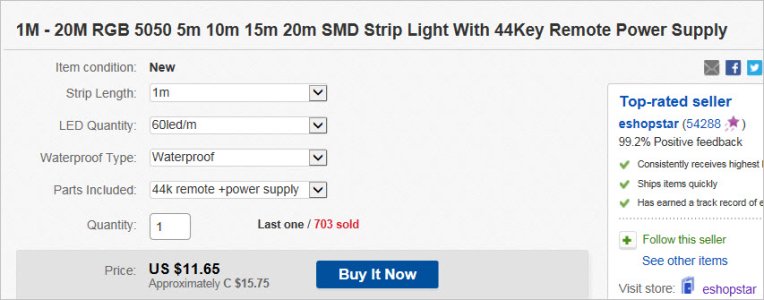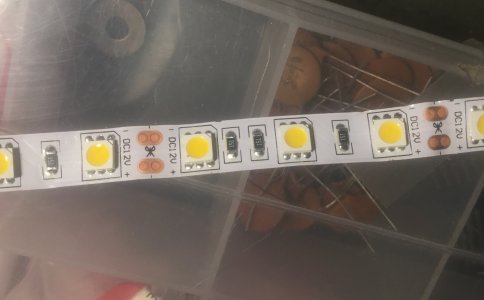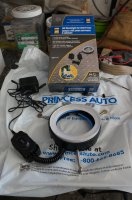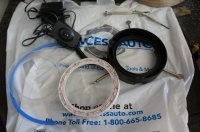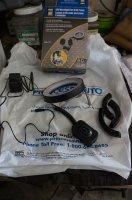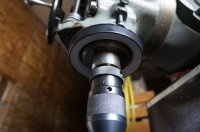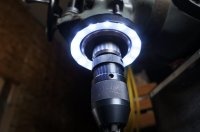I'll throw some technical information about LED's in here to try to confuse everybody:
LED - Light Emitting Diode - Actually almost all diodes are light emitting. LED's are just diodes that are optimized to create light.
Firstly, LED's are diodes. When current goes through them in the forward direction (conventional current from the anode to the cathode - the anode is positive, the cathode is negative) there will be a voltage drop across the junction and light will be emitted roughly in proportion to the current. The voltage drop is nearly constant with current.
So when you apply a forward DC current to an LED, there will be a nearly constant voltage drop across the diode. Regular diodes have a forward voltage drop in the .7 to .9 volt range (they tend to emit some far infrared internally). Infrared LED's are in the 1-2 volt range. Red - about 2.2V, Green a bit higher, blue and ultraviolet LED's are in the 3.5 - 4.0V range. The color of the light (frequency) is generally dependent on how high the forward voltage drop is. The forward voltage drop is dependent on what the diode is made of.
White LED's are actually blue or near-ultraviolet LED's with phosphor that absorbs some of the blue/UV and emits it as yellow (yellow is actually red and green light). The results is red, green, and blue light that human eyes perceive as white. The phosphor is why white LED's look yellow when they are off.
If you take a "white" LED and put 3V across it, almost no current will flow. As you approach the forward voltage drop (about 3.5 - 4V), the current will increase very rapidly. As the current increases, the emitted light will increase in proportion. As the current increases, there is heat generated at the junction, and it will quickly destroy the diode. At less than 4.5V you will probably let out the magic smoke. It is important to limit the current through the LED to be less than what the diode can handle.
The easiest way to limit the current is with a simple resistor. If you put three 3.5V LED's in series, they will drop 10.5V. If you then add a resistor, and feed it with 12V, the current will be limited by the resistor. Use the standard V = I x R to determine the resistor value If you want to limit the current to 100mA (0.10A), using R = V / I, you get (12 - 10.5) / 0.1 which is 15 ohms. So, a 15 ohm resistor will limit the current through the three series LED's to 100Ma. Each LED will have 100mA flowing through it (they are in series), and will produce the amount of light that diode produces from 100mA.
In this case most of the power is dissipated by the LED's and only a little by the resistor (10.5V across the LEDs, and 1.5V across the resistor. The resistor just turns the wasted power into heat, so if it tries to dissipate too much power it will burn up.
That is why most small LED strips consists of 3 LEDs' and a resistor when fed by 12V. This becomes quite sensitive to input voltage since if you raise the input voltage to 13.5, the voltage drop across the resistor increases to 3V, which would double the current to 200mA from 100MA.
Much fancier setups will use an active switching circuit to control the current through the LED's. That is what you will find inside of most really bright LED fixtures.
LED's are not good at resisting voltage in the reverse direction. All diodes have a reverse breakdown voltage. If the voltage across the diode exceeds the reverse breakdown voltage the diode will begin to flow current in the reverse direction. That is usually catastrophic for the diode (zener diodes are diodes that are designed to do that). The magic smoke will usually be released. The reverse breakdown voltage is not usually even published by the manufacturer of the diode since the LED should generally never have a reverse voltage applied across it.
That brings me to LED Xmas lights that run off of 120VAC. There should be a regular diode (with a 200+V reverse breakdown rating) in series with the LED's to protect them from high reverse voltages. I've never really looked at how the cheapie AC strings are wired, but I would guess that they would be split into two substrings, each wired in a different direction. One would light on one half of the AC cycle, the other on the other half of the cycle. There could be 30-40 "white" LED's per substring, with a resistor to provide current limiting.
If you are using LED's to light up a machine be careful of the LED's flashing. LED's are very fast and if their power comes from the AC line, they will flash 6o times a second. If they are powered by a decent12V DC supply, there will be capacitors in the supply to smooth the DC so there is no flashing.

